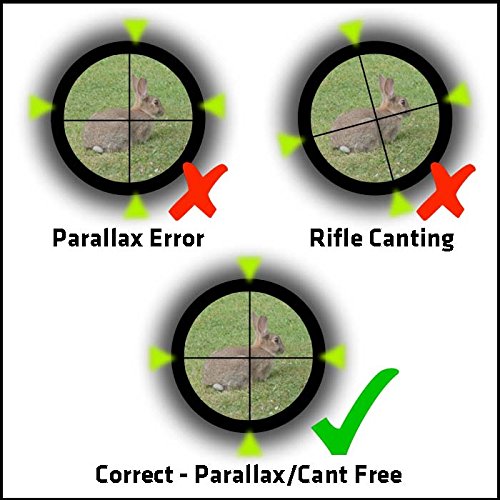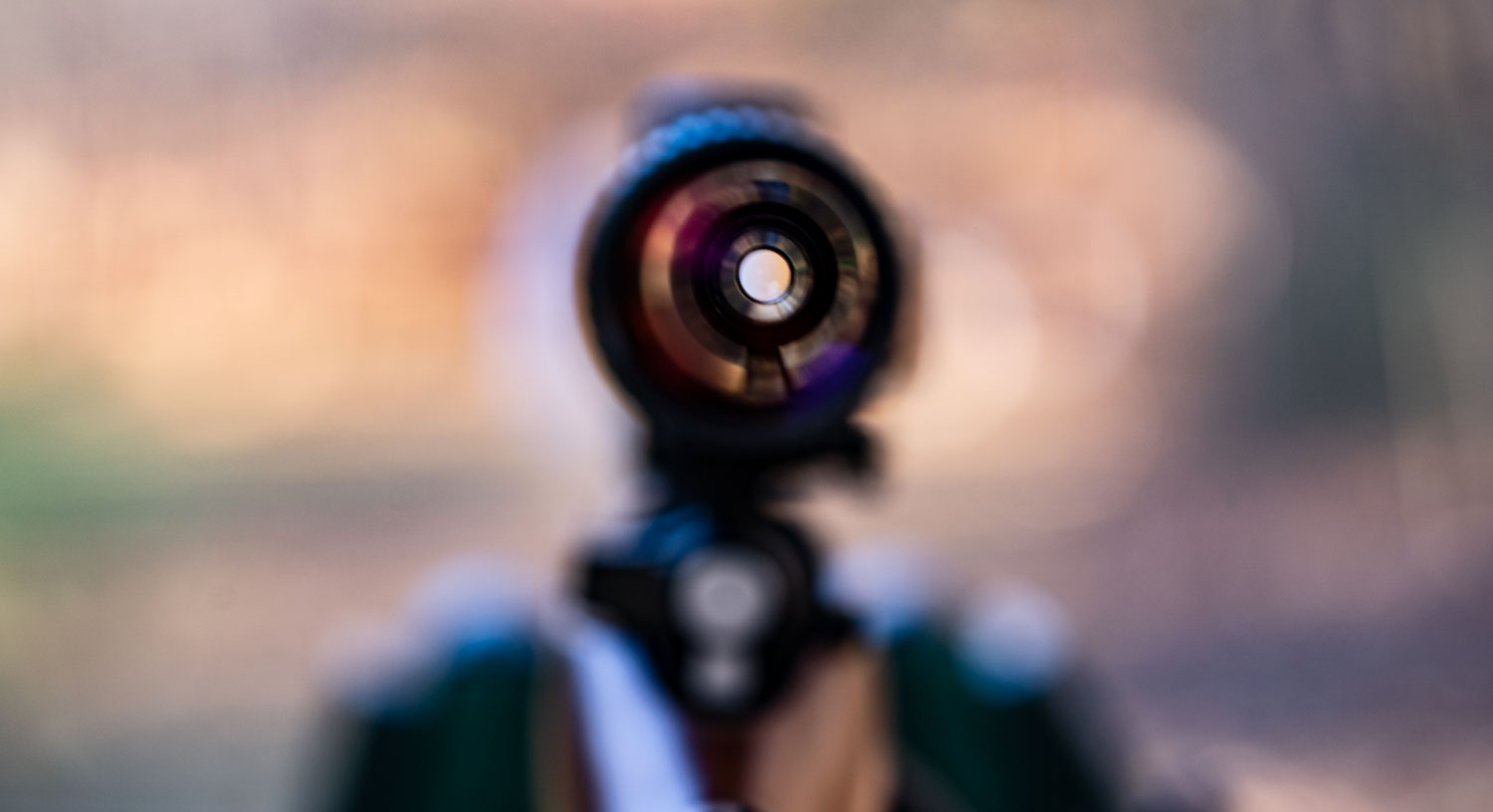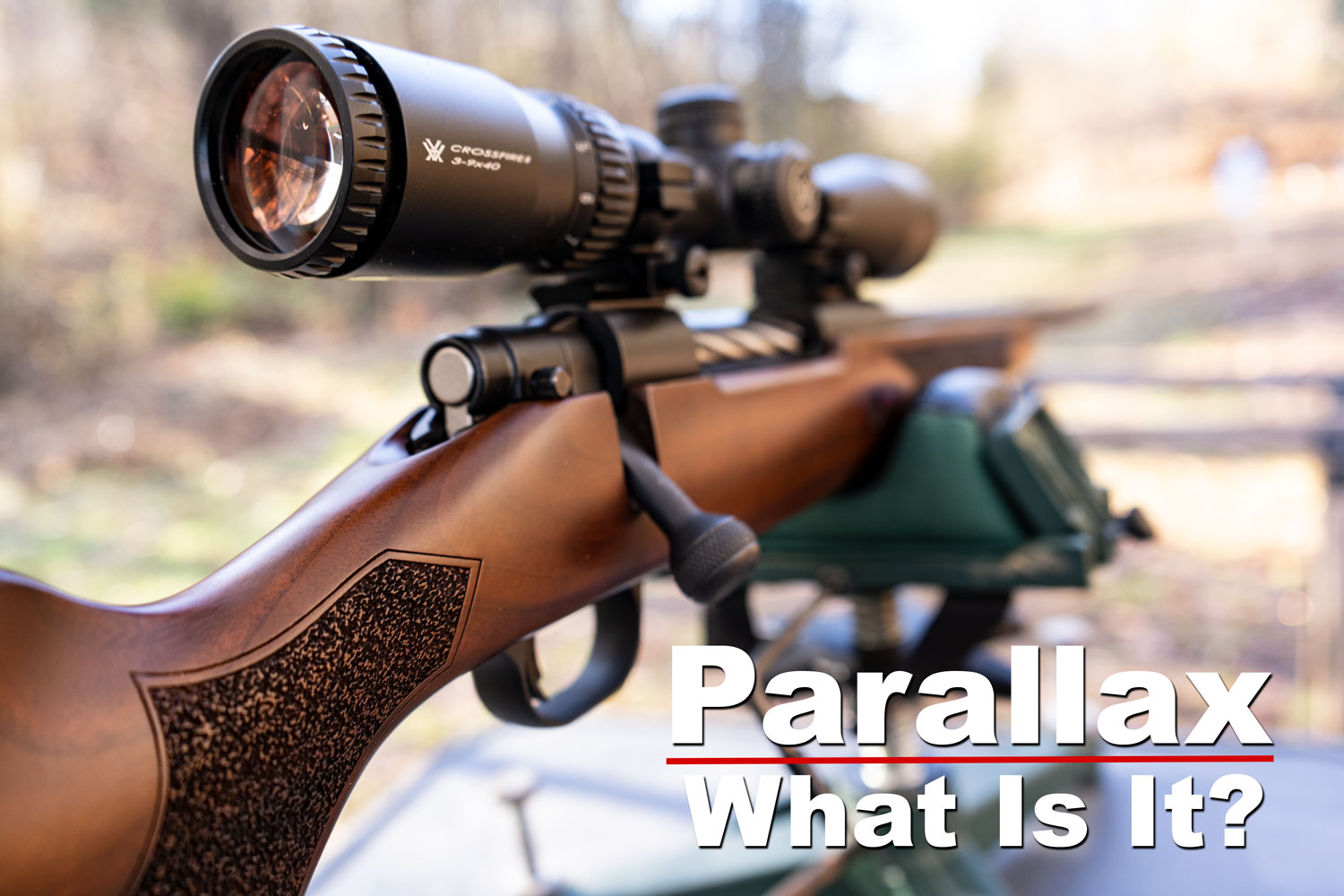If you think “Parallax” sounds like a bad guy from a comic book, you would be right. A quick Google search reveals that Parallax is indeed an ugly dragon-looking thing that squares off against the Green Lantern. We’re not experts on comic books, so we assume that the Green Lantern simply womps Parallax over the head with his lantern. He hasn’t got a very good superpower if that is the case. But we digress. Parallax is more than a threat to a fictional guy in tights. It’s also a complication that you have to take into account when you use a telescopic sight. In this article we’re going to briefly explain what parallax is, and how you can overcome it.
Origins of Parallax
The word parallax comes from the Ancient Greek word παράλλαξις, which means “altercation.” Put simply, it is the difference in the apparent position of an object when viewed along two different lines of sight. You can easily witness parallax in action while you’re looking out a car side window. It’s the reason why distant trees appear to be moving past you slower than nearby ones. Now, imagine that one of the nearby trees is your scope’s reticle, and one of the distant ones is your target. If you are trying to line the two up, doing so becomes impossible while you are moving. Alternatively, look at an object across the room. Now, obscure that object by holding up your finger. Now, move your head. Notice how your finger no longer obscures the object?
What Is Scope Parallax In Shooting?

A good visual demonstration of parallax and how it looks from the shooter’s perspective. (Graphic courtesy: RifleScopeCenter.net)
This is why parallax happens in shooting. It occurs when your scope’s image processing separates your reticle and your target. This puts the target and retinal on two planes instead of one. It’s a problem when that happens, because your reticle no longer accurately reflects your rifle’s actual point of aim. Parallax shift is apparent when your reticle floats around in response to your eye movement. The longer the distance you’re shooting across, the bigger an issue it becomes. It can not be corrected merely by bringing your scope into focus.
When Parallax Matters
 Parallax isn’t a major concern until you’re shooting at 250 yards or more. Scopes that are set to 150 yards can get away without parallax adjustment just fine. Scopes that magnify an image to 8x or more typically do have that feature, however, either as an adjustable side turret or ring on the objective lens. The function of parallax adjustment is to set the reticle on the same focal point as the target itself, thus permitting an accurate shot.
Parallax isn’t a major concern until you’re shooting at 250 yards or more. Scopes that are set to 150 yards can get away without parallax adjustment just fine. Scopes that magnify an image to 8x or more typically do have that feature, however, either as an adjustable side turret or ring on the objective lens. The function of parallax adjustment is to set the reticle on the same focal point as the target itself, thus permitting an accurate shot.
Adjusting Parallax
When you adjust parallax correctly, no amount of eye movement will cause the reticle to reflect anything other than the rifle’s true point of aim. Determining whether you need to adjust a scope for parallax is simple. If the reticle wanders across your target as you move your eye, that’s parallax, and it should be corrected for. Ideally you would adjust for parallax whenever the distance you’re shooting across changes, but slight errors may not cost you a shot.
Like all things that involve a telescopic sight, adjusting for parallax demands attention to detail. In general, however, it’s accomplished by first setting the parallax adjustment to infinity, and then back until the reticle becomes clear. When you have adjusted until the reticle no longer moves along with your eye, you have beaten parallax. Now you only have to worry about windage, bullet drop, temperature, air pressure, your heartbeat, and what you’re going to get your wife for your anniversary.
Rifle scope parallax is a concept that many shooters fail to grasp the first time they hear it. We blame the weird word for that. Parallax is a natural phenomenon that you’re already totally familiar with. So, really it’s all about making certain that your optic’s reticle and your target are in synch with one another. A few clicks and you’ll be right there.






Leave A Comment